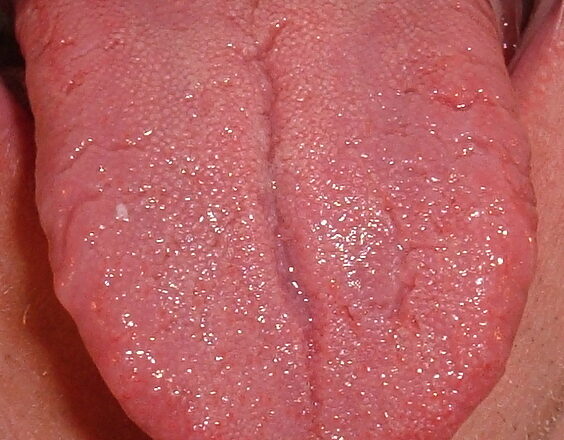Function and structure
From its place in the oral cavity, the human tongue takes part in talking, eating, and swallowing. It is muscular and moves because of a collection of extrinsic and intrinsic muscles at its base. The bumpy texture of the tongue, which is often visible, are papillae, and within them are microvilli, microscopic hairs that send messages to the nervous system.
The tongue is attached to the mucosa at the bottom and back of the oral cavity and contains many nerves and blood vessels. The tongue is divided down the middle by a median septum.
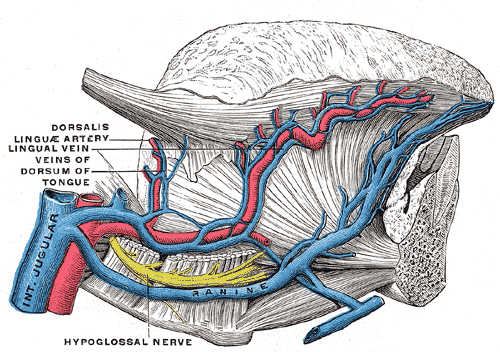
Muscles and connective tissue
The tongue is anchored to the back of the throat by the hyoid bone and the fleshy web called the frenum.
Extrinsic muscles (attached to the mandible and hyoid bones): genioglossus, styloglossus, palatoglossus, and hyoglossus
Intrinsic muscles (within the tongue): longitudinalis superior and inferior, transverus linguae, verticalis linguae

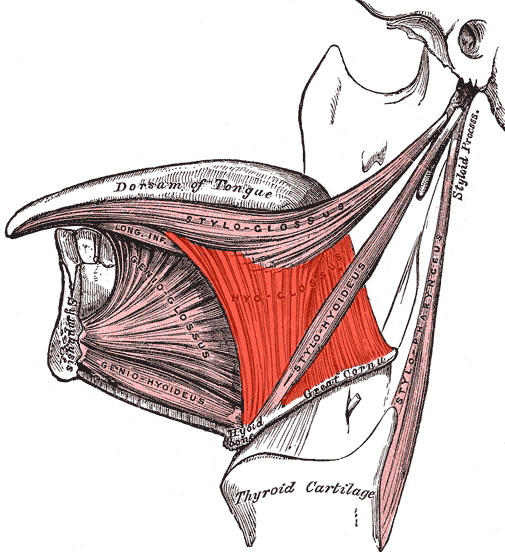
Tastebuds
The surface of the tongue is covered in more than 10,000 tastebuds, small chemoreceptors discovered in the 1900s that provide us with the sense of taste by picking up on five different types of chemicals. They are actually nerve endings within a protective envelope on a short stalk and are also called gustatory cells. Tastebud nerve endings conduct signals through ion channels or G-protein coupled receptors, depending on the type of chemical being detected (see post on the Sense of Taste for more information).
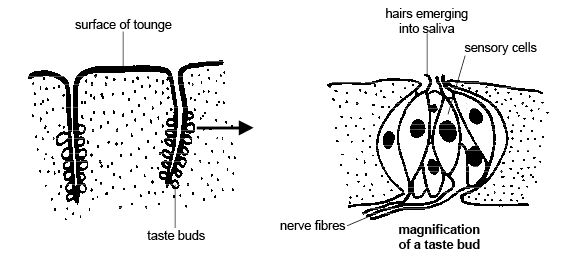
Innervation
Two cranial nerves carry taste signals from the tongue through the nucleus of the solitary tract in the brainstem: VII (facial nerve) and IX (glossopharyngeal nerve). The vagus nerve (X) also carries taste information to the brain, but it gains that information from the back of the mouth.
These nerves send taste signals to the thalamus and somatic sensory cortex (the gustatory cortex), and then to the limbic system (amygdala and hypothalamus) with information on smell.
For tongue movement, the hypoglossal nerve (XII) is involved, and for pain, pressure, and other sensations on the tongue, the trigeminal nerve (V).
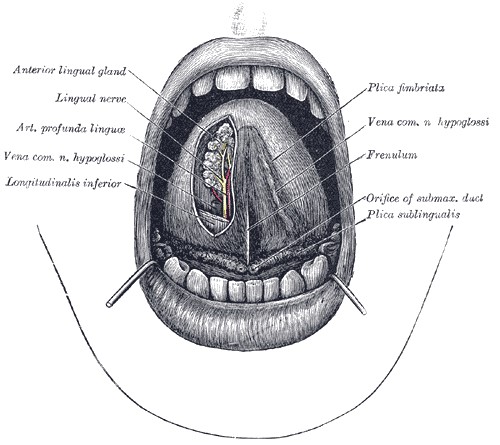
Advanced Terminology
- Macroglossia – an enlarged tongue. Some people are born with a larger tongue (congenital), sometimes it swells with trauma or other disorders, and certain oral cancers can cause it to be inflamed and swell.
- Atrophic glossitis – loss of the bumpy texture on the tongue. Also called “bald tongue”. It is usually caused by anemia or vitamin B deficiency.
- Hairy tongue – overgrowth of the papillae. It is a harmless condition and they can be scraped off by an oral health specialist without any damage.
- Ageusia – loss of taste/inability to taste. Very rare given the number of nerves involved.
- Hypogeusia – reduced sense of taste. Common as a person ages.
- Hypergeusia -enhanced sense of taste.
Disclaimer: This page is for informational and learning purposes only. It is not meant to diagnose or treat any medical condition and should not be used in place of speaking with a medical doctor or seeking treatment.
Aliconia Publishing, LLC and the author make any and all attempts to ensure the accuracy of the presented facts. If you find an issue with any information on these pages, please use the Contact page to alert us. The content is subject to change based on new information or to be updated with additional facts. The date of last change is stated under the main header.
